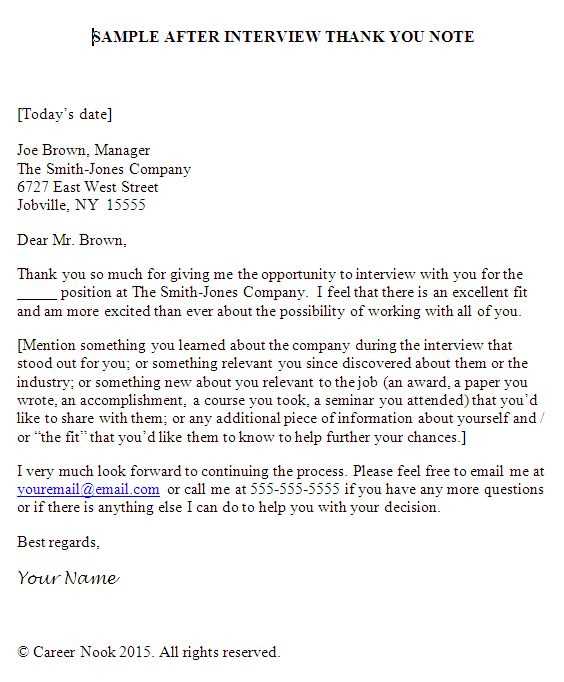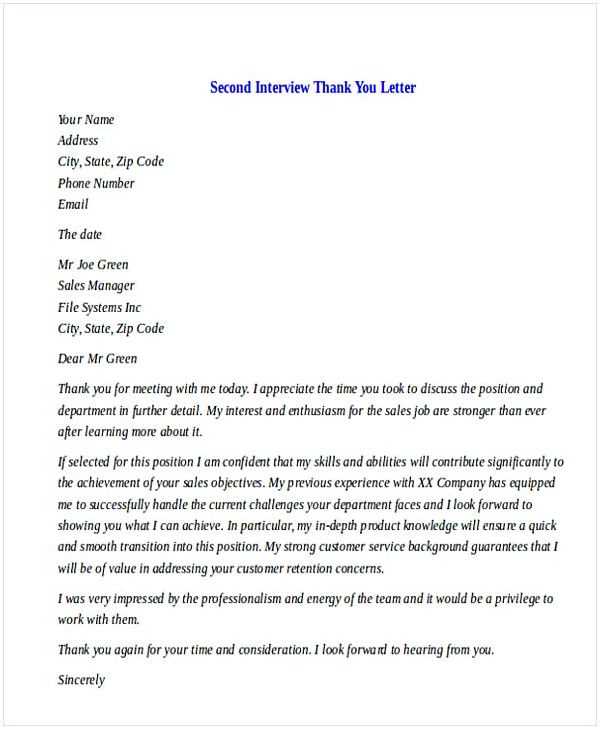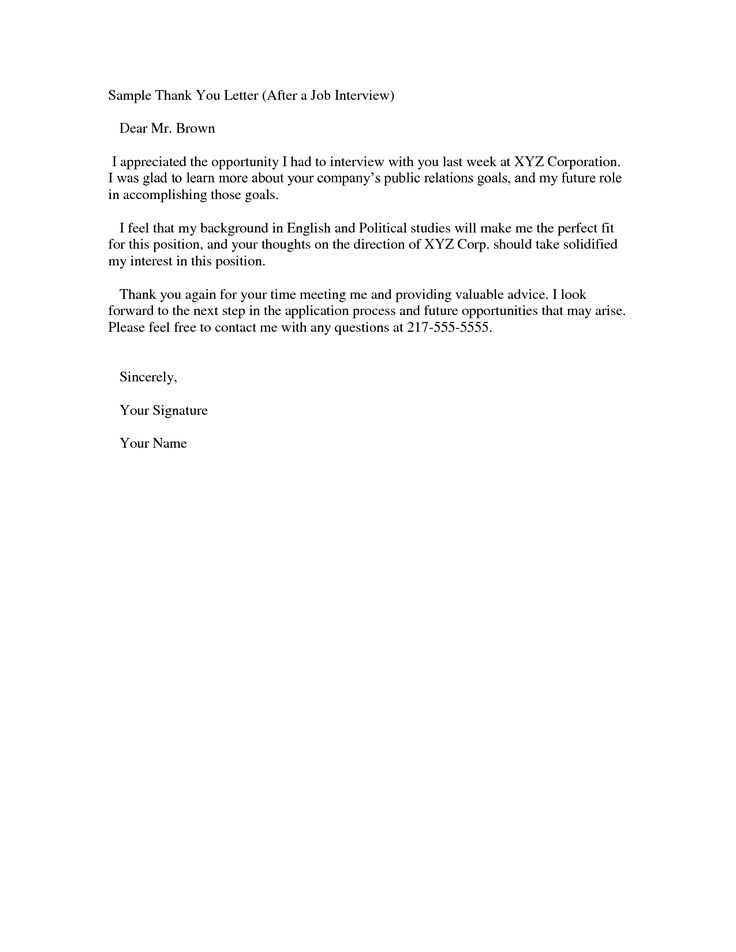Thank You Letter Template After Your Interview

After a meaningful conversation with a potential employer or business associate, it’s essential to follow up with a polite and well-composed message. This note shows respect for the time spent and helps reinforce your interest and suitability. A well-crafted message can leave a lasting impression, whether for job prospects or other professional engagements.
Key Elements of a Polite Follow-Up

A message expressing your gratitude should highlight specific points discussed during the interaction. It should also express appreciation for the opportunity and reinforce your enthusiasm for the role or project. Here are key components:
- Personalization: Referencing specific conversations or details from the meeting.
- Professionalism: Maintaining a formal and respectful tone.
- Clarity: Expressing your message concisely while ensuring it’s easy to understand.
Optimal Timing for Sending
It’s important to send your message at the right moment to ensure it’s timely but not rushed. Generally, within 24 to 48 hours is considered ideal. This shows promptness without appearing too eager.
Examples of Well-Structured Notes
Here are two examples that illustrate different approaches to this professional communication:
- Formal Approach: “I appreciate the opportunity to discuss my qualifications for the position. I am excited about the possibility of contributing to your team and believe my skills align well with your needs. Please don’t hesitate to reach out for any further information.”
- Casual Yet Professional Approach: “Thank you for taking the time to meet with me today. I enjoyed our discussion about your team’s projects and feel confident that my background can bring value to the role. Looking forward to staying in touch.”
Final Touches
While writing, it’s important to keep the tone polite but natural. Proofreading ensures clarity, eliminating any potential errors that might undermine professionalism. A clean, concise message will demonstrate your attention to detail and communication skills.
Why Sending a Gratitude Note Matters

Following a meaningful interaction with a professional contact, it’s crucial to express your appreciation through a thoughtful message. This gesture serves not only to convey your gratitude but also to maintain a connection, leaving a positive impression and showing that you value the time and attention given. A well-composed note strengthens your professional image and can help you stand out among other candidates or collaborators.
How to Structure Your Message Effectively
When drafting your message, ensure it is clear and concise. Start with a formal greeting and express your appreciation early. Then, mention specific aspects of the meeting that resonated with you, highlighting your interest and qualifications. Conclude by reaffirming your enthusiasm for the opportunity or next steps, while keeping the tone respectful and professional.
Best Practices for Customizing Your Note
Tailor your message to the specifics of your interaction. A personalized note that references particular discussions shows that you were engaged and attentive. Mentioning any shared goals or insights will help reinforce your suitability for the role or project. Keep the tone appropriate to the context–formal for professional settings and slightly more relaxed for casual meetings, but always respectful.
Timing Your Appreciation Note Right
Sending your message within 24 to 48 hours after your meeting ensures it remains relevant and timely. This promptness reflects your enthusiasm and organizational skills. Avoid waiting too long, as the opportunity to reinforce your connection may fade, but also don’t send it immediately, as it could appear overly eager.
Common Errors to Avoid in Gratitude Messages
There are several pitfalls to watch out for when crafting your note. Avoid being too generic or overly wordy, as this can dilute the impact of your message. Steer clear of making spelling or grammatical mistakes, as these can diminish your professionalism. Lastly, never forget to proofread before sending to ensure that your message is polished and error-free.
Examples of Effective Appreciation Notes
Here are two examples of well-crafted messages:
- Formal Example: “I truly appreciate the time you took to meet with me today. The conversation reinforced my interest in the position, and I am eager to contribute to your team. Please don’t hesitate to contact me if you need any further details.”
- Casual Example: “Thank you for the engaging discussion today. It was great to learn more about your company’s projects. I look forward to the possibility of working together and contributing to the team’s success.”